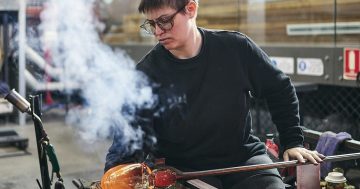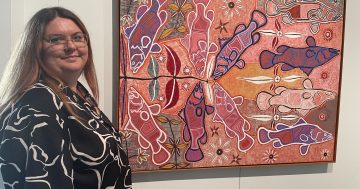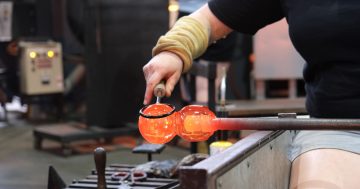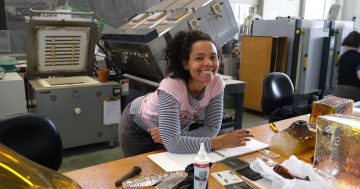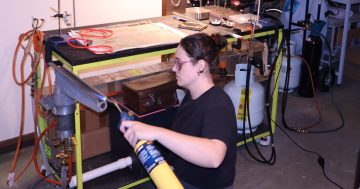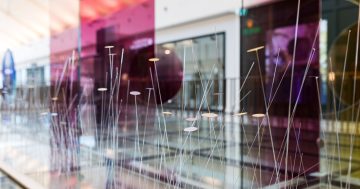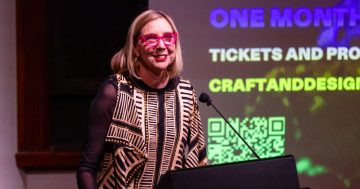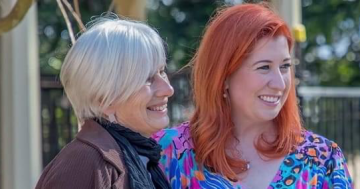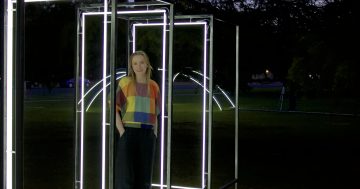
Jenni Kemarre Martiniello has been involved in sculpture since the 1980s and started doing glassworking workshops and residencies in 2007. Photo: Tina Fiveash.
“Can I weave glass?” This is the question that inspired Arrernte woman Jenni Kemarre Martiniello OAM to become the award-winning glass artist she is known as today.
Just as she did more than a decade ago, Jenni will help an emerging First Nations glass artist at Canberra Glassworks find inspiration and realise their potential.
The year-long cultural residency will involve working collaboratively and individually on glass works based on the expression of First Nations culture.
But Jenni says incorporating First Nations culture into her and her mentee’s art is more than just an artistic choice.
“The responsibility of being First Nations means looking after or taking care of country,” she explains.
“But it also means taking care of culture and participating in the preservation and continuation of culture in whatever ways and means are available to us.”
The glass used during the mentorship also extends this cultural responsibility, having been sourced entirely from recycled television screens.
“Taking care of country needs to adapt for the environment that we’re in, so it’s not just looking after plants, birds and animals,” Jenni explains.
“It is actually looking after the land itself and the waterways by stopping unnecessary waste going into those areas.”
Jenni says First Nations artists, especially those living in urban areas like Canberra, should embrace contemporary mediums like glass to care for country and culture, as she first did over a decade ago.
Although she had been involved in sculpture since the 80s, Jenni had limited experience in glassworking before doing a series of workshops and residencies of advancing difficulty between 2007 and 2011.
Of about 20 First Nations artists Jenni trained alongside during this period, only Jenni and one other woman, Lynda Delian, continued onto the more advanced classes.
Jenni remembers being motivated to continue by a short, four-word question “that had been sitting in the back of my mind for decades”. That question was, “Can I weave glass?”
“I was really wanting to evoke and pay tribute to not just the oldest living weaving tradition in the world, but the fact that my aunties were weavers and they made the most, what I consider, incredibly beautiful objects,” she remembers. Jenni set out to give a “new form of contemporary creative expression” to the ancient cultural practice of weaving objects, including eel traps, fish traps and dilly bags.
“You have to create a lot of glass canes to be combined several times over in various ways so they become quite complex to evoke weaving in a hot blown glass object,” she explains.
But it didn’t happen overnight.
Faced with a ‘European palette’, it took Jenni two years to simply perfect her own coloured glass to match the native fibres used for weaving.
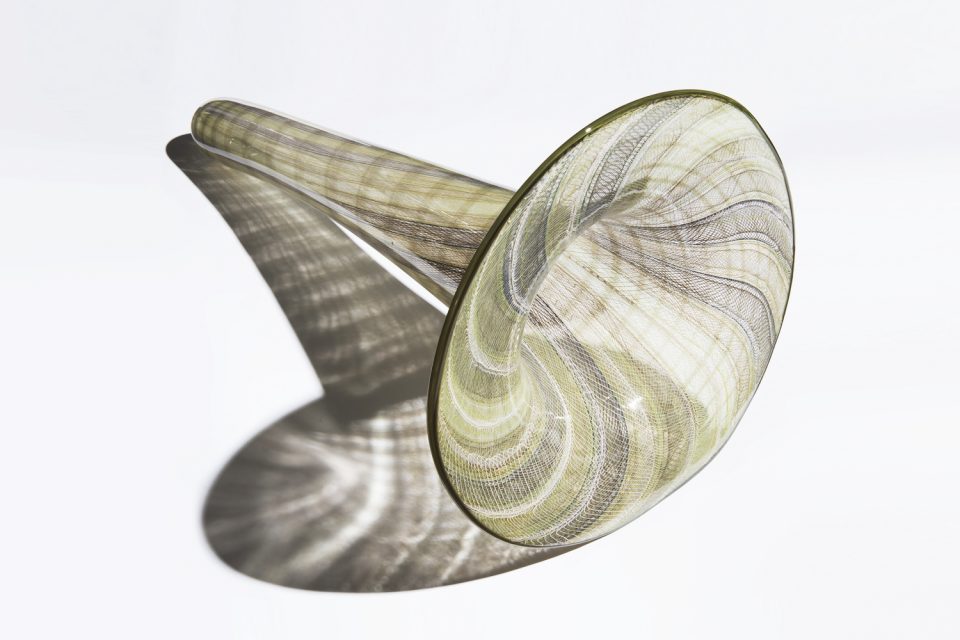
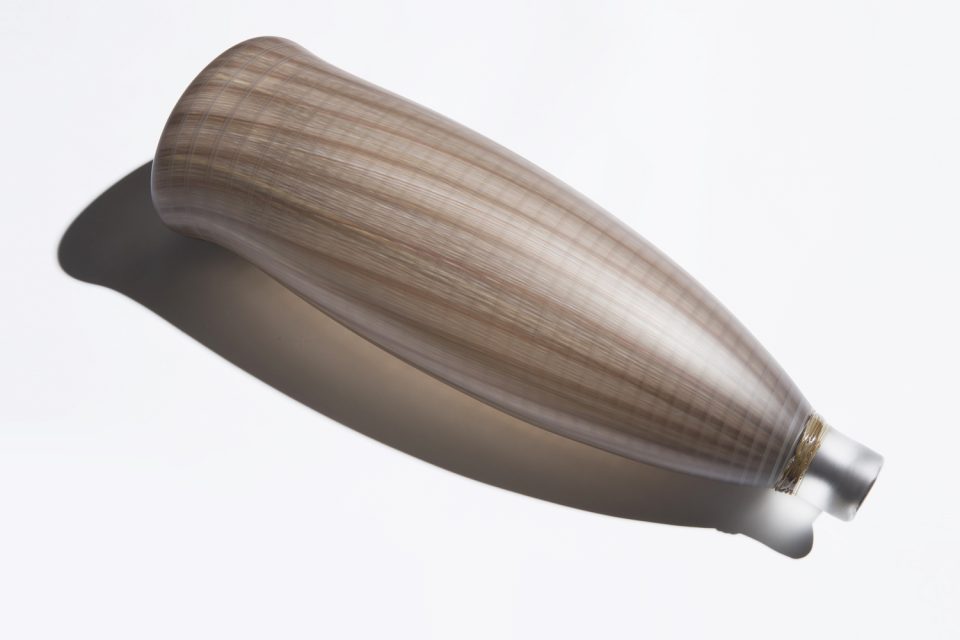
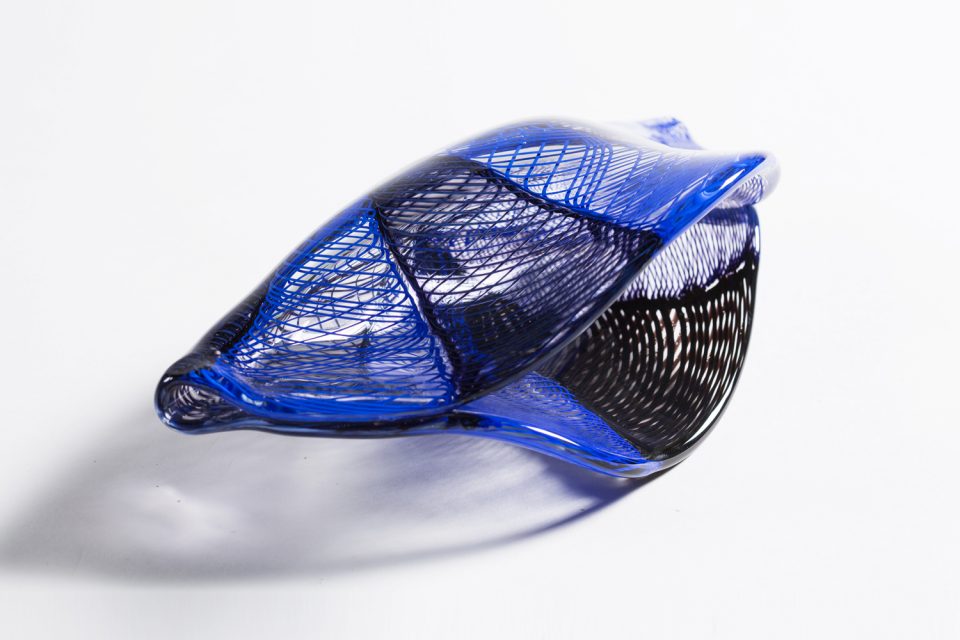
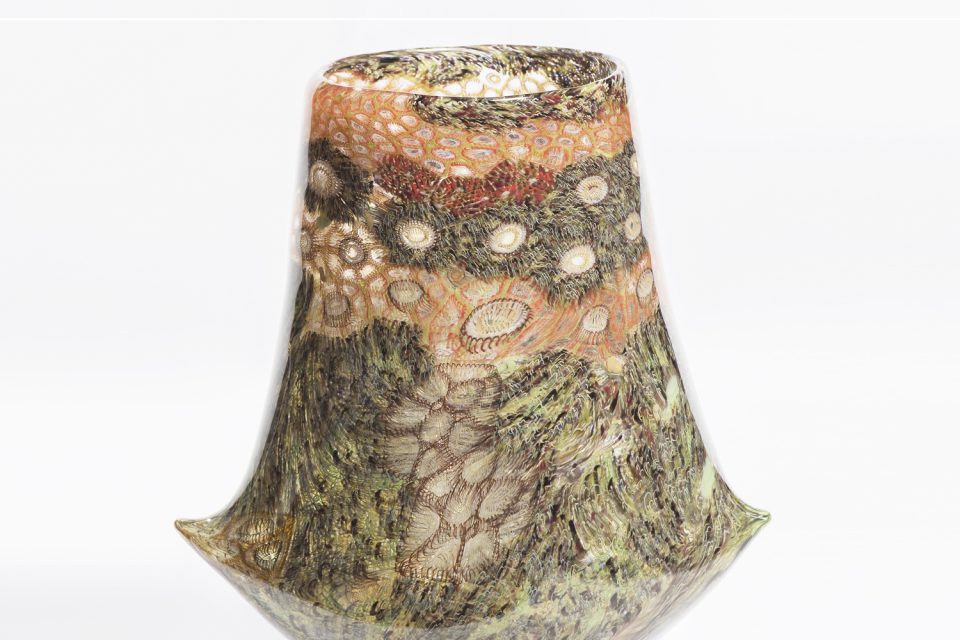
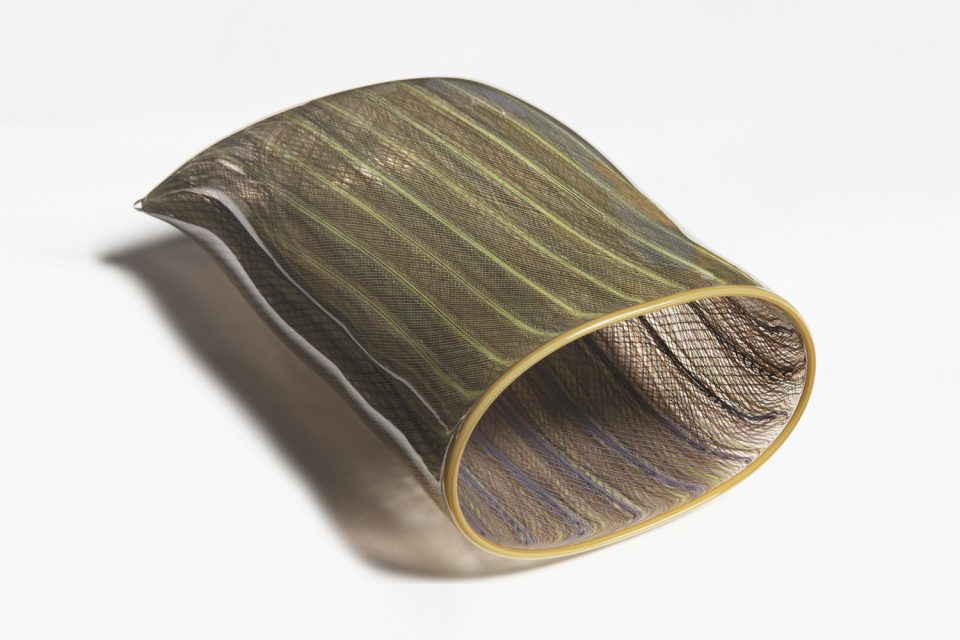
Not only is glassworking an intricate and time-consuming process but it can’t be done alone and requires access to a suite of specialised glassworking equipment.
Jenni says even today, she knows of only four or five other First Nations glass artists, partly because of the high cost of working with the material.
However, the 2023 residency has been fully funded by the ACT Government’s new cultural arts fund, aimed at supporting and enhancing Canberra’s culture and identity.
The successful artist, who will be selected in the coming weeks from a shortlist compiled by Jenni, will also receive technical assistance from glass caster Spike Deane.
Although the $15,000 grant enabling the cultural residency is from a new arts fund, this isn’t Jenni’s first time as a mentor, having taught and inspired several others.
“You don’t ever stop teaching and mentoring,” she says. “It goes with cultural responsibility and the older you get, the more of that you have.”
To learn more about Jenni’s work, visit Craft and Design Canberra.












